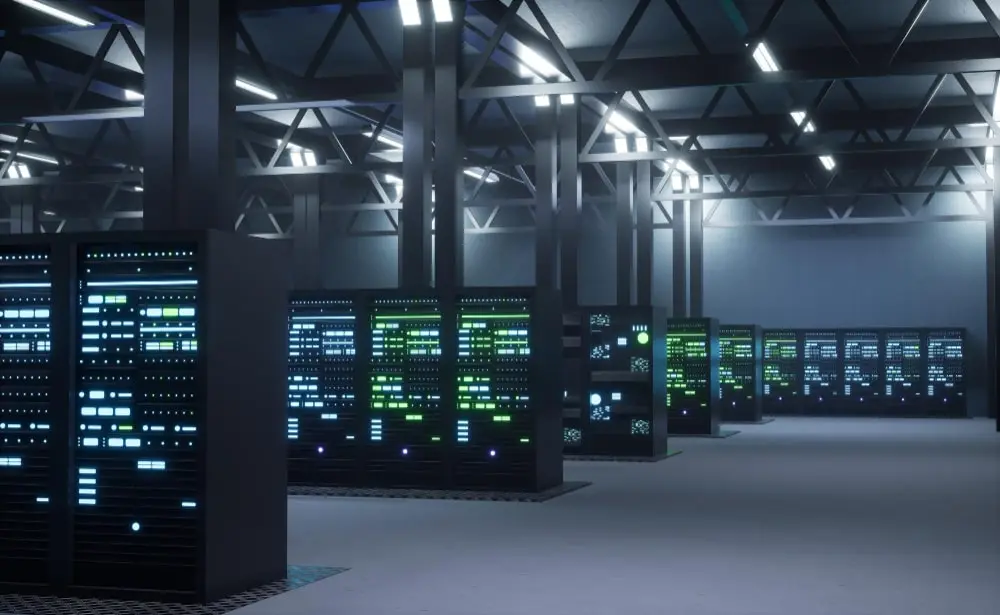If you are considering hosting your physical servers in a third-party data center a practice known as colocation you are essentially renting real estate for your hardware. Unlike renting an apartment, this specialized space is measured not in square meters, but in Rack Units.
The Rack Unit, universally abbreviated as U or RU (Rack Unit), is the single most important metric in data center infrastructure. Understanding what a U is, how it’s measured, and how to calculate your total required server space is the first step toward smart, cost-effective colocation planning.
This guide breaks down the Rack Unit standard, explains its critical role in colocation servers, and gives you the tools to accurately calculate your hardware footprint.
Table of Contents
ToggleWhat is a Rack Unit (U or RU)
The Rack Unit is the standardized vertical measurement for electronic equipment designed to be mounted in a 19-inch server rack. This standard was defined by the Electronic Industries Alliance (EIA) to ensure universal compatibility and interoperability across all hardware and rack manufacturers globally.
The Exact Measurement: 1U = 1.75 Inches
One single rack unit (1U) is defined as precisely 1.75 inches of vertical space.
- Imperial Measurement: 1.75 inches
- Metric Equivalent: 44.45 millimeters (mm)
This dimension is strictly applied to the equipment’s faceplate height. In a physical rack, the height of 1U corresponds exactly to the vertical span occupied by three distinct holes on the rack’s mounting rail, with this three-hole pattern repeating up and down the rail.
The 19-Inch Standard: Width Context
While the Rack Unit standardizes height, it is inseparable from the standard width of the enclosure: the 19-inch rack. The 19-inch (482.6 mm) dimension refers to the width of the equipment’s front panel, including the mounting “ears” used to fasten the equipment to the vertical rails.
The ubiquity of the 19-inch rack, governed by the U standard, makes it the essential enclosure for almost all modern colocation servers, networking hardware, and storage systems.
Governing Standards
To guarantee that a server bought in one country will fit into a rack manufactured in another, the industry adheres to rigorous standards:
- EIA-310-E (ANSI/EIA-310-E): The primary North American standard governing the dimensions, features, and structural integrity of 19-inch racks.
- IEC 60297: The international standard, which mirrors the EIA specifications to ensure global interoperability.
When you select a colocation provider, you can be confident that your rack-mount server, built to these specifications, will fit perfectly into their server racks.
How to Calculate Your Server Space Needs (The Colocation Math)
The typical full-height, floor-standing server rack used in data centers is 42U tall. This provides 42 discrete vertical slots for mounting equipment, which translates to a total height of about 73.5 inches (1866.9 mm).
When planning for colocation, your calculation involves more than just counting servers. You must consider the various U sizes of your equipment and reserve space for supporting infrastructure.
Common Server U Form Factors
IT equipment is manufactured in multiples of 1.75 inches, leading to standardized U sizes. The height you choose for your server is a trade-off between maximizing density and ensuring adequate performance and cooling.
| Unit (U/RU) | Vertical Height (Inches) | Vertical Height (mm) | Typical Application |
1U | 1.75 | 44.45 | High-density servers, compact routers, switches |
2U | 3.50 | 88.90 | Mid-range servers, balanced compute/storage, enhanced cooling |
3U | 5.25 | 133.35 | High-performance systems, larger internal components |
| 4U | 7.00 | 177.80 | Large-scale storage arrays, specialized systems, superior cooling |
| Full Rack | 73.50 (42U) | 1866.9 | Standard maximum height in colocation facilities |
Beyond Servers: Allocating Space for Critical Peripherals
A common mistake in colocation planning is failing to reserve U space for essential non-server components. Your total required U space must account for:
- Servers: The sum of all your 1U, 2U, or 4U server chassis.
- Networking Gear: Switches, routers, and firewalls often require 1U or 2U of space.
- Power Distribution Units (PDUs): Devices that manage power distribution within the rack. While some are zero-U (vertical mounting at the back), many require 1U or 2U to be mounted horizontally.
- Uninterruptible Power Supply (UPS): Depending on the model, rack-mount UPS units can consume 2U to 8U or more.
- Cable Management: Advanced cable management systems, patch panels, or liquid cooling manifolds may consume 1U per segment.
Tip for Planners: Always add 1U of empty space between very high-heat-generating devices (like blade enclosures) for thermal separation. While a rack can theoretically hold 42 1U servers, real-world constraints mean a fully populated rack often has a few U’s reserved for airflow and management.
Also Read: Server Rack: Types, Features, and How to Choose the Right One
U Size vs. Performance: The 1U vs. 2U Trade-off
The choice between a 1U and a 2U server form factor significantly impacts both your colocation costs (since you pay per U) and your hardware’s operational performance.
| Factor | 1U Servers (High Density) | 2U Servers (Balanced) | Strategic Advantage |
Density | Maximum servers per rack. | Half the density of 1U. | Saves Colocation Costs if floor space is the main constraint. |
Cooling | Very constrained volume; relies on small, high-velocity fans. | Double the volume allows for larger, slower, more efficient fans. | Reduces Operational Noise and improves thermal stability. |
Expansion | Limited to low-profile PCIe cards and restricted drive bays. | Ample space for full-height PCIe cards, extensive storage, and robust power supplies. | Maximizes Flexibility for specialized tasks like AI acceleration or massive storage. |
When selecting hardware for colocation, remember that while 1U saves rent, 2U often provides a better thermal margin and flexibility, potentially leading to a lower Total Cost of Ownership (TCO) by reducing the risk of component failure and aggressive fan noise.
Critical Physical Constraints in Colocation Racks
Beyond the vertical measurement, several other physical standards determine successful server mounting and operation in a colocation environment:
Why Mounting Holes Matter: Cage Nuts
Modern colocation racks overwhelmingly utilize square holes on the vertical mounting rails. This design allows for the use of cage nuts small, threaded components that snap into the square hole to provide a reliable mounting point for screws and bolts.
The advantage of square holes and cage nuts is profound for colocation clients: if a threaded hole becomes damaged (e.g., due to over-tightening), only the inexpensive cage nut needs to be replaced, not the entire vertical rail or rack frame.
This guarantees faster maintenance and higher operational efficiency. Square holes also enable the use of modern, tool-less mounting rails that simply latch into place.
Depth and Clearance: More Than Just Height
In a colocation data center, air handling is critical. This is why racks have strict depth and clearance requirements:
- Four-Post Racks are Mandatory: Heavy-duty servers and most standard IT equipment require the stability of a four-post rack, which supports the equipment at both the front and the rear mounting planes. Two-post racks are generally incompatible with modern, deep servers.
- Rear Clearance is King: The distance between the rear of your server and the back cabinet door must be carefully managed. If your setup includes Cable Management Arms (CMAs) which swing out to allow server access a minimum rear clearance of 90 cm (35.43 inches) is required. This generous space ensures that hot air exhaust is not restricted, preventing dangerous thermal back pressure and improving overall cooling efficiency.
- Load Capacity: The EIA standard mandates that a compliant rack must be able to support an average load of 15.9 kg (35 lbs) per U. If you are planning for dense storage systems, always confirm the rack’s total weight capacity.
Conclusion: Making Smart Decisions for Your Colocation Setup
The Rack Unit (U or RU) is far more than a simple measurement it is the universal standard that enables the entire data center ecosystem to function. By understanding the 1.75-inch dimension, the 19-inch width, and the critical need to allocate space for peripherals and cooling, you can optimize your hardware deployment and secure the exact amount of space you need.
Strategic colocation is about maximizing density without compromising reliability. Whether you opt for a high-density 1U footprint or a thermally optimized 2U configuration, precision in planning will translate directly into lower operational costs and greater uptime.
Ready to secure your hardware in a top-tier facility? Quape offers flexible and secure colocation server solutions in Singapore, providing the perfect, compliant home for your 1U, 2U, or full 42U infrastructure.
- What Is a Rack Unit (RU) in Colocation Servers - October 15, 2025
- Getting to Know Tier 3 Data Center: What Are the Benefits? - October 14, 2025
- Colocation vs Cloud: An In-Depth Comparison - October 1, 2025



